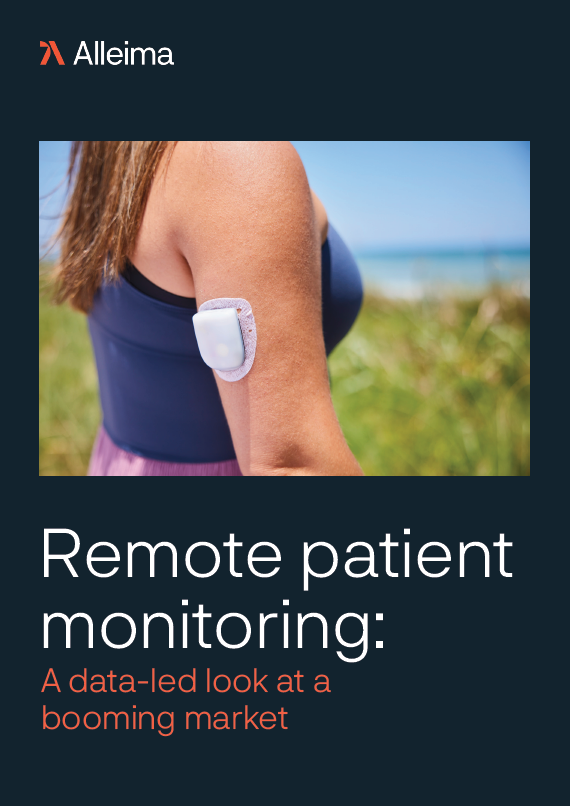
The Covid-19 pandemic markedly shifted people’s attitudes toward where and how healthcare is provided. The widespread use of lateral flow testing brought diagnosis into the home, and utilisation of devices to manage and monitor health seeped into other medical indicators.
Moreover, with in-person visits to health centres restricted, telecommunication technologies provided accessible alternatives to meet with healthcare professionals. Much of this framework has remained in the post-pandemic healthcare setting.
How well do you really know your competitors?
Access the most comprehensive Company Profiles on the market, powered by GlobalData. Save hours of research. Gain competitive edge.

Thank you!
Your download email will arrive shortly
Not ready to buy yet? Download a free sample
We are confident about the unique quality of our Company Profiles. However, we want you to make the most beneficial decision for your business, so we offer a free sample that you can download by submitting the below form
By GlobalDataDespite apparent patient hesitation toward telemedicine (in a GlobalData survey asking how the pandemic has changed physician-patient interaction, the majority said they will continue in-person visits as normal), there has been a wave of legislative and regulatory changes with the aim of making telemedicine a permanent fixture of healthcare provision.
One such critical milestone was announced in February 2023 by the Drug Enforcement Administration (DEA). It proposed permanent rules for the prescribing of controlled medications via telemedicine. Not only would this provide patients with access to a wider range of therapies, but it also acts as a clear indicator that public health policy is installing telemedicine as a long-term plan beyond its original utilisation during the pandemic.
The expansion of telemedicine beyond its pandemic-orientated infrastructure is reflected in market values. In a market report by GlobalData, telehealth (which includes all forms of virtual care) was globally worth $690m in 2015. It is predicted to increase five-fold and be worth $3.8bn by 2030.
Pandemic-induced digitilisation
In the UK, around 80% of GP appointments took place face-to-face prior to the pandemic according to a report by Nuffield Trust. By June 2020, this had fallen to just under half. By 2022, this number had recovered, according to NHS data, to 71% – though it is still down on pre-pandemic levels.
Indeed, part of the NHS Long Term Plan is to increase telemedicine classed appointments to free up capacity in hospitals. By 2024, face-to-face outpatient appointments are predicted to reduce by a third.
“Virtual care is the intersection between digital technologies and healthcare delivery systems and is a trend that’s here to stay,” says Shabnam Pervez, Analyst at GlobalData. “By integrating new and existing digital technologies, healthcare systems can expand their services to patient populations whenever and however is most convenient to each patient.”
A report by GlobalData emphasises trends such as healthcare costs and reimbursement being key drivers in the scalability of telemedicine. Ageing populations, increased burden of diseases, and expanded access to healthcare result in a greater need to streamline health pathways to save money. Digital technologies have allowed convenient ways for patients to access healthcare.
Telemedicine reimbursement regulations, according to the report, have continued to loosen globally which is further fuelling its growth. The US Centers for Medicare & Medicaid Services (CMS), for example, is expanding its coverage of telemedicine provision based on foundations laid during the Covid-19 pandemic.
The pandemic caught global healthcare systems unprepared and, as a result, caseloads spiked all over the world and threatened to overrun hospital capacity. As healthcare systems became overwhelmed, they began to limit or cancel elective procedures and other routine care visits to spare resources and keep non-urgent patients safe from virus exposure.
According to GlobalData, approximately 40% of US providers offered telemedicine services during the pandemic, up from a pre-pandemic level of 15%.
To continue to meet the healthcare needs of their patients, providers turned to virtual care solutions in the form of remote patient monitoring and telehealth. “These virtual care modalities allowed providers to address common health problems, keep an eye on chronic condition management, and ensure their patients weren’t suffering adverse health effects,” says Pervez.
The growth of telemedicine is exhibited in companies like Babylon Health, a market leader in telemedicine. The digital health service provider had 2021 revenue that grew over four times year-over-year to $323m. 2022 revenue is predicted to grow again around three times to $900m-$1bn.
“The Covid-19 pandemic was a huge accelerator for the widespread uptake of telemedicine. Most clinical institutions and practices rapidly transitioned to a virtual model to maintain care delivery without exposing staff and patients to unnecessary exposure risks,” says Dr. Samuel Collier, U.S. National Medical Director at Babylon. “Notably, many institutions that were historically sceptical of telemedicine, citing that the transition would be prolonged and complicated, effectively operationalized the change within a few weeks.”
Mental health care – a digital suitability
DEA’s proposed changes for prescribing of controlled medications via telemedicine consultations opens avenues for certain therapy areas.
In the Journal of Global Health, it is suggested that telemedicine is suitable for mental health cases because of accessibility, reducing stigma, and being able to receive treatment from the privacy of home. Themes of stigma and privacy are permeating through multiple sectors of healthcare – such as the accessibility of sexually transmitted disease (STD) at-home testing kits.
“Digital health is uniquely suited to the provision of mental health care because a mental status exam (the equivalent of a physical exam for mental health clinicians) can be easily conducted via video. Therefore, there is very little difference between an in-person and a virtual visit,” says Collier.
“Additionally, there are a range of mental health conditions that involve difficulties leaving home, tolerating social interactions, or making appointments on time. Virtual care minimizes those barriers.”
The telemedicine policy landscape is undergoing serious transformation since its rapid proliferation during the pandemic.
In 2022, telehealth flexibilities for Medicare beneficiaries were extended beyond the pandemic-focused framework. The National Alliance on Mental Illness, a US-based organisation providing support and education to individuals affected by mental illness, is a strong advocate for the government to both direct funding to telemedicine and introduce more robust legislation to support virtual care for mental health services.
The expansion of telemedicine coverage and reimbursement under Medicaid programmes across the US has indicated promise in the utilisation of virtual care. Indeed, most state programmes reimburse for telepsychiatry.
“Telepsychiatry companies are increasingly using government-regulated software, moving from gimmicky mental health apps (that sometimes use untrustworthy AI algorithms) to regulated apps. The UK’s National Health Services (NHS) use SilverCloud, which is an online cognitive behaviour therapy programme. Similarly, Germany offers its CE-certified Living Well app,” says Pervez.
It is no surprise that neurological and mental health solutions are the biggest share of telemedicine pipeline products, according to GlobalData. Many products have also tapped into the rise in popularity of health management. Mental well-being apps and digital platforms are becoming more prevalent in the current virtual care market to streamline health provision.
Melda Akin, CEO and founder of DHealth – a training platform created in 2023 for patients and healthcare providers – says mental health and wellbeing is an area that can be further complemented by artificial intelligence (AI) centred products.
For Babylon Health, mental health cases are amongst the top uses for its service, as Collier explains.
“Depression and anxiety are among the top spend drivers across all our cohorts.”
“We have already seen more than a 50% improvement in anxiety (GAD-7) and depression (PHQ-9) scores as measured by industry-standard rating scales, which is a leading indicator for an overall reduction in claims spending across both medical and behavioural health costs,” Collier adds.
Telemedicine is clearly an effective avenue for healthcare provision going forward but it is not a blanket strategy for all medical fields. Examples include dermatology, where in-person examination of skin is critical, and diabetes, where blood glucose data needs to be regularly recorded.
Telemedicine’s global horizon
Beyond cultural attitudes between patients and doctors – which regularly shift depending on individual cases – medical requirements and government regulation are key determinants of telemedicine’s longevity. Though most countries have introduced rules that permit telemedicine in the wake of the pandemic, it was not long ago that telemedical activities had no legal backing – Brazil often used as a model.
It is no hyperbole to suggest that scalability of telemedicine hinges on its success within fields it is already suited for. Indeed, Collier believes telemedicine is here to stay for mental health but is aware of hurdles to scalability.
“It has already proven to be an effective way to deliver care and can be utilized to reach patients who lack access to brick-and-mortar care.”
“One barrier to future scalability is the federal requirement for certain patients receiving telemedicine to have in-person visits. For example, those that have opioid use disorder and need medication-assisted therapy with opioid agonists, like buprenorphine,” Collier adds.
The macro perspective that virtual care is not to replace but to augment will need to become accepted opinion by healthcare professionals, insurers, and patients uniformly. With this, the uptake of, and confidence in, telemedicine will be far more sustainable.
“It’s essential in times of urgent situations, where emergency care is required, there is a level of clarity and understanding that suggests digital healthcare is not the solution. Telemedicine is often used for the management of pre-existing diagnoses, and in conjunction with routine health checkups, whether that is involving a visit to the GP’s office or invasive testing,” says Pervez.
“It’s vital we do not get to a point of complacency and deprive ourselves of in-person visits when they are required.”







